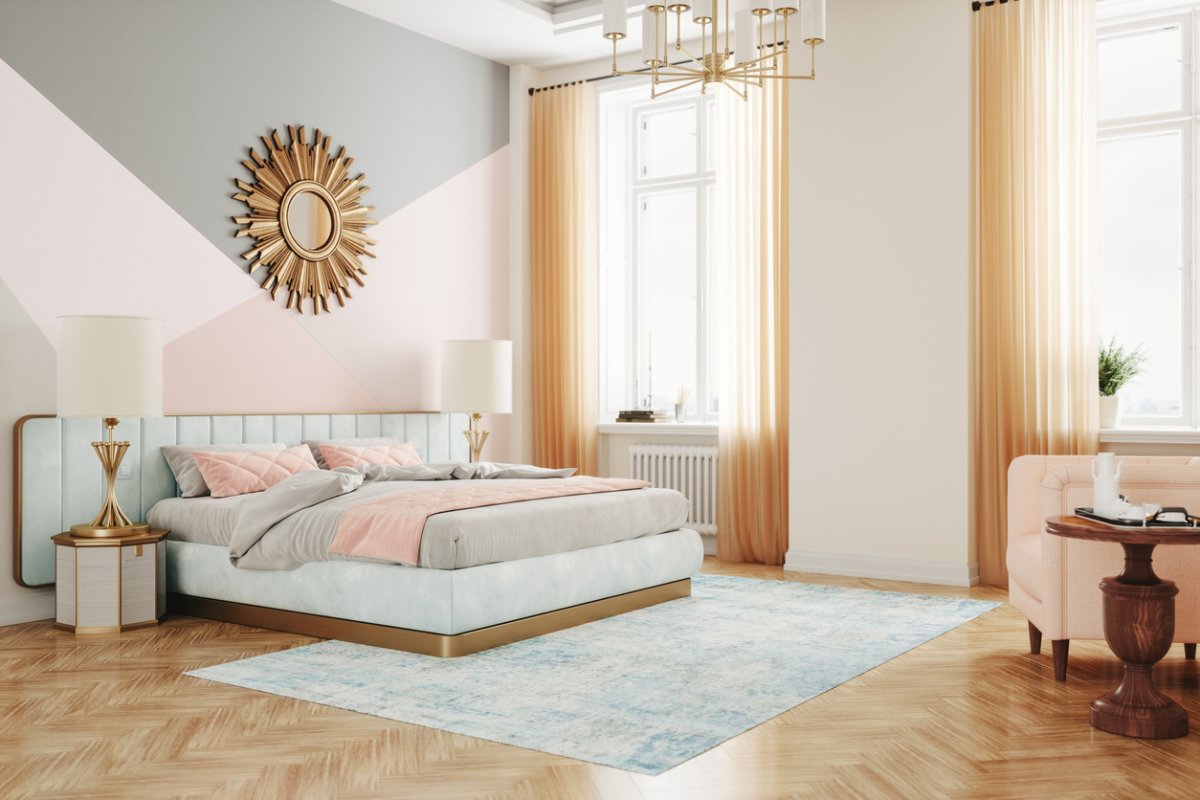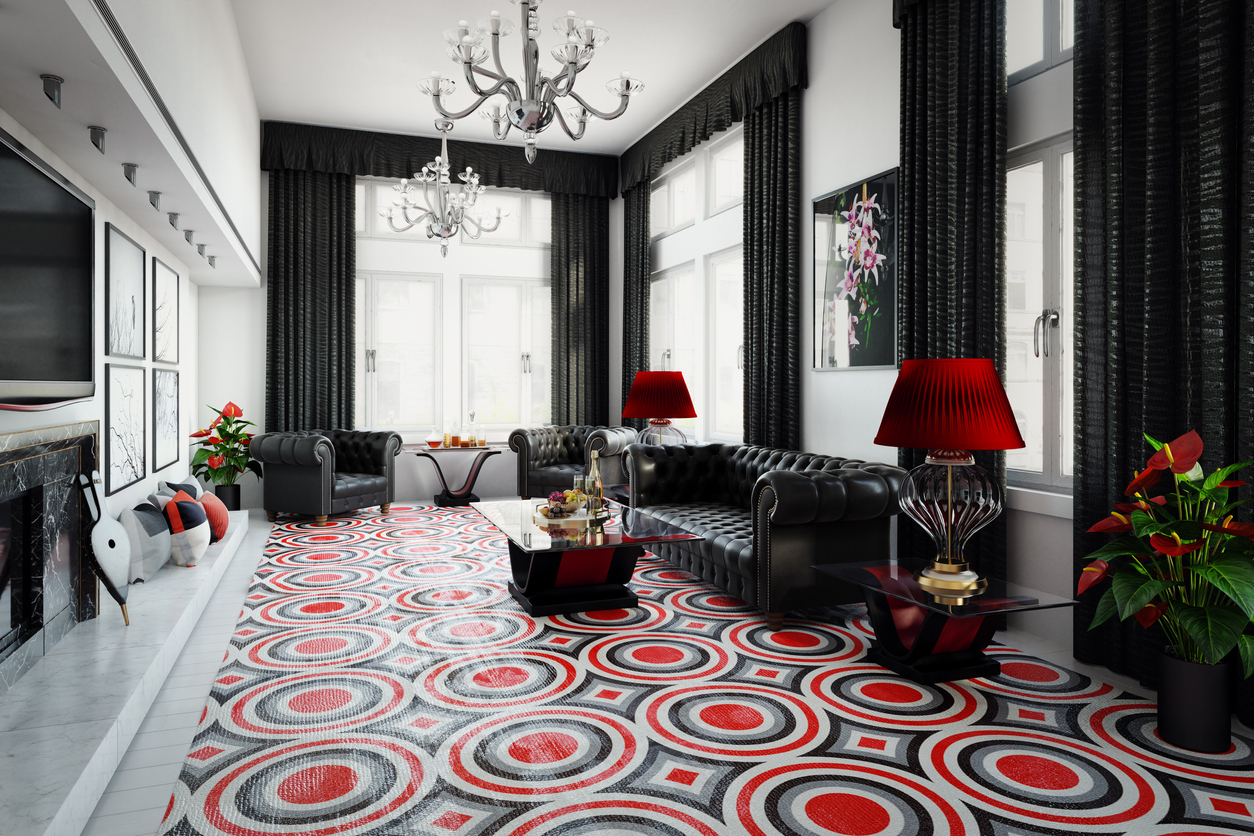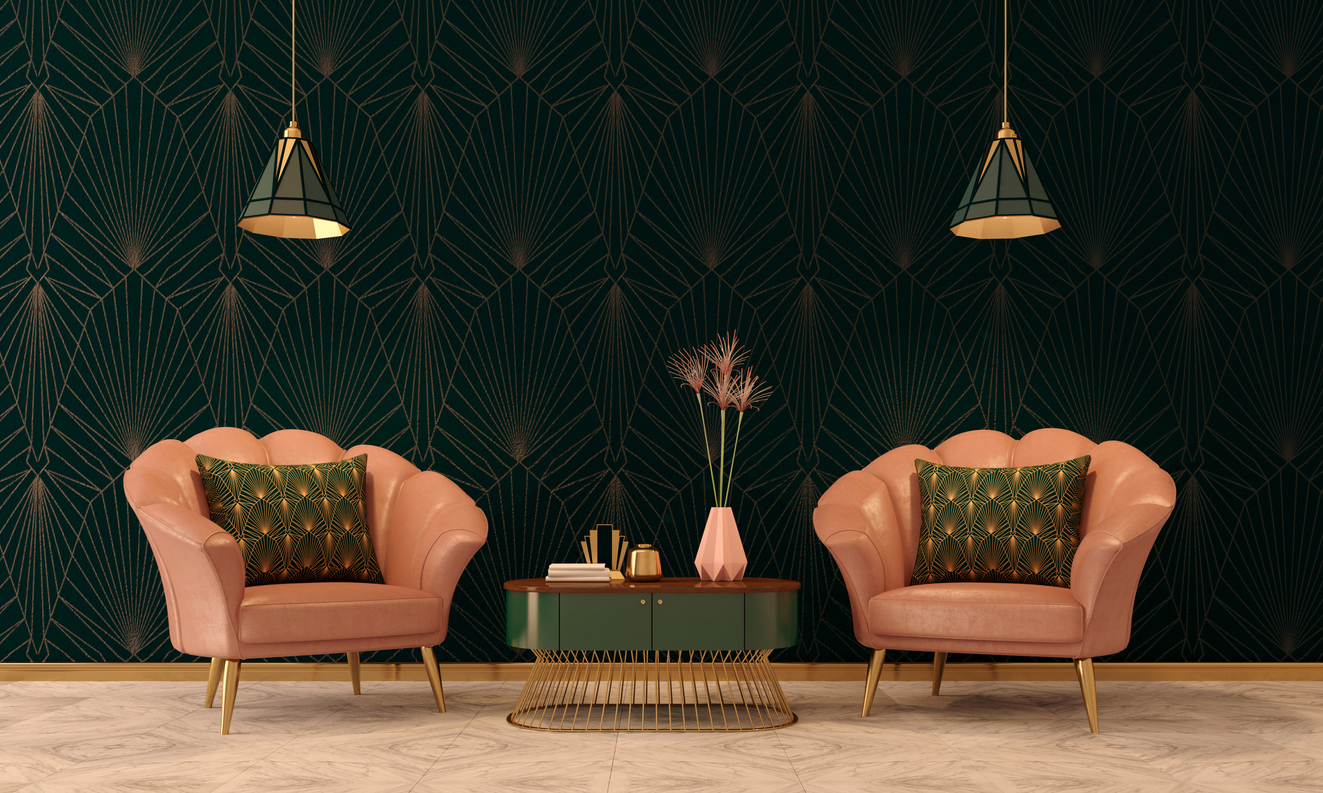

We may earn revenue from the products available on this page and participate in affiliate programs. Learn More ›
Art Deco style was at the height of its popularity during the 1920s and 1930s, but it remains a staple in interior design today. It can still be seen in architecture, furniture, textiles, wallpaper designs, jewelry, glassware, lighting fixtures, and more. The name “Art Deco” is derived from the French term Arts Décoratifs and was based on an exhibit held in Paris in 1925 called the Exposition Internationale des Arts Décoratifs et Industriels Modernes (or the International Exhibition of Modern Decorative and Industrial Arts).
What is Art Deco style? If you’re interested in using Art Deco interior design principles to decorate your home, here are a few things to know.
1. Art Deco is dramatic, alluring, and luxurious.
Before shopping for Art Deco pieces, it’s important to familiarize yourself with the style’s key characteristics. Art Deco has a very distinct look that sets it apart from other popular interior design aesthetics. It lives somewhere between the past and the present—its roots are in the Roaring Twenties, but its striking colors, patterns, and geometric shapes make it timeless. Art Deco rooms can bring a sense of luxury, making it the perfect style for anyone who wants to add some elegance and glamor to their home.

2. It’s rooted in the celebration of technological advancements and mass production.
The Art Deco movement began shortly after World War I, when artists were optimistic about the future and looking to capture the spirit of the times in their work. The Art Deco movement began in Paris in the 1920s. It was a rejection of the artistic style that came before it, Art Nouveau, which was all about organic, naturalistic shapes and designs. Art Deco shapes were sleek and geometric—an exciting departure from the curves of Art Nouveau. Taking inspiration from a wide array of influences, including Cubism and Egyptian motifs, Art Deco was all about sharp angles and edges to represent industry and progress. Its popularity waned during World War II, when many materials and resources were instead directed to the Allied war effort.
3. Symmetry plays an important role.
When designing with Art Deco in mind, symmetry is essential. While the style is a melting pot of influences ranging from traditional to modern, it still follows a strict set of rules. Even when Art Deco motifs and elements are abstract, they’re arranged in a symmetrical pattern to create a visual rhythm and harmony. Strong vertical lines are also used to create a sense of order and sophistication. Art Deco is about balance, so keep symmetry in mind when incorporating this style into your home. A sofa flanked by matching armchairs or lamps, for example, can turn a regular space into an Art Deco oasis.

4. Geometric shapes are characteristic of Art Deco.
Generally speaking, the shape of a piece is more important than its color when it comes to Art Deco design. Typical Art Deco patterns include chevrons, zigzags, waves, and sunbursts. These shapes are often repeated throughout a room in different forms: an area rug might feature zigzags, the wallpaper can be patterned with waves or chevrons, and a table or mirror might include the design’s iconic sunburst shape. Many Art Deco pieces also feature bold colors, but muted pastels are equally common.
5. Shiny metals, mirrors, and acrylic are mainstays.
One defining characteristic of Art Deco design is its use of materials like metal, steel, plastic, and glass, which were quickly growing more affordable for designers and furniture makers. The Empire State Building is one of the best-known examples of Art Deco architecture, displaying sharp lines in its relief and a high-gloss exterior.
In homes, metal was often used as trim for furniture or an accent material on decor. Steel was particularly popular, as the metal is strong and holds up over time, making it a great choice for furniture frames. Mirrors were another popular choice because they reflected light back into the room, creating an airy effect. They could also be easily cut into angular shapes to better fit with the style.

6. Art Deco accessories come from around the world.
Art Deco is exemplified by its use of motifs and materials from far-flung locales. These designs are a reflection of how popular travel was growing among the elite and middle class—and a wider public fascination with global cultures people were gaining first-time exposure to. Furniture designers frequently made use of foreign hardwoods inlaid with ivory or ebony. Brass hardware was often used to give the furniture an elegant shine. Animal skins (particularly those from big cats) or furs were popular decorative accents for upholstery. Today, faux animal rugs and hides provide more sustainable Art Deco options.
